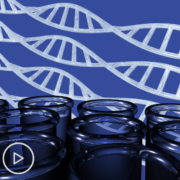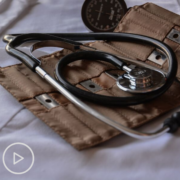How Leukemia is Diagnosed
Introduction to Leukemia
Cancer and neoplastic lesions are affecting our lives every day. Nearly 40% of the world’s population is affected by cancer—irrespective of age, gender, and ethnicity. Equally detrimental to cancer’s physical manifestations are the psychological influences. However, medical advancement and new research are helping to to combat this life-threatening disease.
Of all the cancers of the body, the most treacherous is Leukemia. It is a cancer of blood cells. Humans have three kinds of blood cells: red blood cells, white blood cells, and platelets. Leukemia involves the malignant proliferation of white blood cells (WBC).
Our white blood cells are major components of our body’s defense mechanism. They play a vital role in fighting against diseases, whether bacterial, viral or fungal in nature. They originate within the bone marrow, spleen and lymph nodes.
A person suffering from Leukemia has poor white blood cell functioning. WBCs start to divide abnormally eventually outgrowing the normal number of cells.
Leukemia has 4 types:
- Acute Myelogenous Leukemia (AML)
- Chronic Myelogenous Leukemia (CML)
- Acute Lymphocytic Leukemia (ACL)
- Chronic Lymphocytic Leukemia (CLL)
1. Acute Myelogenous Leukemia (AML)
Acute Myelogenous Leukemia is a heterogeneous clonal disorder. It is characterized by immature myeloid cells and bone marrow failure. It commonly affects children and adults. Studies have suggested the disease arises from recurrent hematopoietic stem cell genetic alterations.
2. Chronic Myelogenous Leukemia (CML)
Chronic Myeloid Leukemia is a myeloproliferative (slow-growing blood cancer) disorder characterized by the existence of a balanced genetic translocation of chromosomes 22 and 9. It mostly affects adults. CML consists of 3 distinct phases: chronic, accelerated, and blast phases.
The history of patients with CML shows 3-5 years of chronic stage proceeding to a fatal blast phase and then progressing to an accelerated phase.
3. Acute Lymphocytic Leukemia (ALL)
Acute Lymphocytic Leukemia is the second most common Leukemia occurring in adults. Like other Leukemias, ALL’s pathophysiology is also based on chromosomal abnormalities and genetic alterations which happen to take place in differentiation and proliferation of lymphoid precursor cells present in the bone marrow and blood. In adults, the precursors of B- lymphocytes are greater in number than the malignant T- lymphocytes.
4. Chronic Lymphocytic Leukemia (CLL)
Chronic Lymphocytic Leukemia is a tumor of CD5+ B cells that characterizes the deposition of tiny, mature lymphocytes in the blood, bone marrow and lymphoid tissues. Apart from the CD5 cells, other genetic alterations are involved in the pathogenesis of Chronic Lymphocytic Leukemia. Stromal cells, T cells and nurse-like cells in the lymph nodes also predominate.
Causes and risk factors for Leukemia
Although the exact cause of Leukemia is unknown, certain risk factors can contribute to making a person susceptible to it. These include radiation, viruses, exposure to benzene, smoking, genetics, and family history.
1. Ionizing radiations
Exposure to ionizing radiation comes from continuous radiation therapy for treating any pre-existing cancer. Prolonged exposure to X-rays is found mostly in people who work as radiologists and are exposed to persistent radiation. Patients who have received chemotherapy sessions for cancers are also prone to Leukemia. Ionizing radiations damage the DNA and result in the defective genetic makeup of stem cells.
2. Viruses
The Human T-lymphotropic Virus (HTLV-1) has been shown to have an association with Leukemia.
3. Exposure to benzene
Benzene is a toxic solvent used in cleaning chemicals and some hair dyes. Benzene’s toxic effects on the blood and bone marrow include increasing the risk of Acute Myeloid Leukemia (AML), myelodysplastic syndrome, and other hematological malignancies, such as non-Hodgkin’s lymphoma.
4. Smoking
Smoking is not only detrimental for the lungs alone but for the entire body. Although the link between smoking and Leukemia is unclear, studies say it can affect the bone marrow and increase the chances of AML in young adults.
5. Genetic conditions
Chromosomal abnormalities are also responsible for increasing Leukemia susceptibility. Examples include Down syndrome, Klinefelter syndrome, Fanconi anemia, Li-Fraumeni syndrome, Bloom syndrome, Ataxia-telangiectasia, and neurofibromatosis, to name a few.
6. Hereditary
The most common cause of Leukemia is family history. If any family member has had Leukemia it increases the risk for other blood relatives.
Signs and symptoms of Leukemia
The signs and symptoms of Leukemia vary with different forms. They are generally nonspecific and warrant investigations for proper diagnosis.
Acute Myeloid Leukemia (AML)
The signs and symptoms of AML are:
- Fever
- Pain in bones and joints
- Pale skin
- Easy bruising and contusions
- Recurrent infections
- Unusual bleeding, epistaxis, bleeding gums
Chronic Myelogenous Leukemia (CML)
The signs and symptoms of CML are:
- Fatigue and muscle weakness
- Shortness of breath
- Pyrexia
- Increased sweating mostly during the night
- Cachexia (weight loss)
- Abdominal discomfort secondary to spleen enlargement
- Stomach bloating
- Itching
- Pain in joints and bone
Acute Lymphocytic Leukemia (ALL)
The signs and symptoms of ALL are:
- Joint pain and muscle fatigue
- Fever
- Frequent infections
- Epistaxis (Nose bleed)
- Lumps felt around the neck, groin and underarms as a result of lymph node swelling.
- Pale skin
- Shortness of breath
Chronic Lymphocytic Leukemia (CLL)
The signs and symptoms of CLL are:
- Nocturnal sweating
- Fever
- Recurrent infections
- Fatigue and constant tiredness
- Cachexia
- Loss of appetite
- Stomach bloating as a result of splenomegaly (enlarged spleen)
- Shortness of breath
- Pea-sized swelling or lumps in groin, neck or armpits.
Diagnosis of Leukemia
Early detection can prevent complications. The earlier the diagnosis the easier treatment is. Medical advancement has made diagnosis easier than ever before. Some of the essentials to reach an accurate and precise diagnosis are enlisted below.
History and examination
A proper and detailed history is the key to an ideal diagnosis. It involves asking relevant questions related to the signs and symptoms that can link to the suspected disease.
Your physician might ask the following questions:
- How long have you been feeling a fever?
- What is the temperature?
- Do you feel a loss of appetite?
- Have you experienced prolonged bleeding after a cut?
- Have you noticed any changes in weight recently?
- When did you notice lumps?
- Are these lumps felt, painful and movable?
- Did you feel the lumps gradually increasing in size?
- Do you face difficulty in breathing?
- Do you feel you sweat a lot while sleeping?
- Are you taking any medications?
- Have any of your family members had any diseases?
- When did you feel the need to visit the physician?
The answer to the above questions can lead to the next step, investigations.
Investigations for Leukemia
Investigations are the major component involved in diagnosis as they make the suspected disease clear to understand. These include blood tests, radiology and biopsy.
1. Blood tests
- Complete Blood Count (CBC)
- White Blood Cell (WBC) differential
- Blood smear
- Tumor markers
- Cerebrospinal fluid (CSF) analysis
- BCR ABL1
- Genetic tests for targeted cancer therapy
- Chromosome analysis
The most commonly used test is the Complete Blood Count (CBC) which shows a clear picture of the abnormal growth of red blood cells, white blood cells and platelets.
2. Radiology
The excessive proliferation of the cells in the bone marrow leads to marrow expansion and invasion of the cortex which, in later stages, can be seen by radiographic studies. A simple X-ray can reveal any spot bone changes. In some circumstances, a CT-scan may be needed to extensively study the disease and prognosis.
X-ray findings may include:
- Osteolytic lesions; most commonly seen in Acute Lymphocytic Leukemia seen in small and flat bones, metaphysis of long bones.
- Metaphyseal bands (classical Leukemia lines)
- Bone destruction
- Some pathological fractures
- Radiological lesions, in later cases, are seen in the form of vertebral collapse, osteolysis of bones and avascular osteonecrosis.
3. Bone marrow biopsy
This is the gold standard investigation to diagnose Leukemia. This invasive procedure is done after the suspicion of Leukemia or when the blood test reports point to a Leukemic picture.
The procedure involves the removal of a small sample of bone marrow from the hipbone. A long, thin is the needle is used to extract the bone marrow. Once the sample has been taken it is sent to the laboratory where the histopathologists study the tissue microscopically.
Prior to examining the histopathologist or the lab technician prepares a slide. During the process, the specimen is then cut into thin slices. The sectioned structure is dyed using different dyes. The dye discriminates against the parts of the cells. The section is then placed on a glass slide and then covered with a slip on the top to keep the specimen intact. The slide is now ready to be placed under the microscope.
The samples examined under the microscope are then studied based on the type of cells, how the cells are arranged, whether the cells are normal or abnormal etc.
The microscopic findings may reveal:
- Acute Myeloid Leukemia
Increase in bone marrow cellularity, consisting of granulocytic or monocytic forms a number of erythroid precursors
- Acute Lymphocytic Leukemia
Hypercellular bone marrow with multiple tightly packed lymphoblasts that have undetectable cytoplasm, round irregular shape, divided nuclei, and dispersed chromatin. The bone marrow has B and T lymphoblasts with indistinguishable morphology along with necrosis in some areas.
Treatment for Leukemia
Treating Leukemia challenges all medical practitioners. Its success and failure solely depend on the extent of the disease and how far has it spread within the body.
Following are treatment options that can help fight Leukemia.
1. Chemotherapy
Chemotherapy is the use of anticancer drugs to kill or halt the proliferation of cancer cells. Generally, chemotherapy is administered orally or intravenously. In some patients, the chemotherapeutic agent is given intrathecally, i.e., injected into the CSF (cerebrospinal fluid) that bathes the brain and spinal cord. This is done after performing a lumbar puncture and injecting chemotherapeutic drugs, such as methotrexate. The course is usually repeated every three weeks.
2. Radiotherapy
Compared to chemotherapy that attacks all the cells of the body, including the healthy ones, radiotherapy is a localized treatment regimen. High ionizing-energy radiation emits to destroy cells that have an increased proliferation rate. Radiotherapy can either be given to cure the disease (therapeutic) or to improve the signs and symptoms encountered during the disease course (palliative).
3. Stem cell or bone marrow transplantation
Transplants are widely used in management and treatment of the disease. Bone marrow is transplanted from a patients’ family member, or another person who bears the same type of bone marrow, into the diseased person. The survival rates vary with different factors but the cost and affordability remain the major concern in this treatment modality.
4. Immune therapy
Immune therapy is another set of treatments that has some promising result in managing Leukemia. The immune therapy works by promoting the immune cells of the body to fight against cancer cells. One of the successful regimens in immune therapy is Gleevec, commonly given in Chronic Myeloid Leukemia. CML patients live a long, symptomless life with the daily oral administration of this drug.
Complications with Leukemia
Though Leukemia is curable, treatments may give rise to certain complications–basically the body’s response to the treatment given. The complications mostly arise from chemo and radiation.
They can include:
- Anemia
- Skin rashes
- Altered taste sensations
- Soreness of the mouth and throat
- Liver dysfunction
- Hair loss
- Diarrhea
- Fatigue
- Bleeding
- Fertility problems
- Nausea and vomiting
- Neurological effects
- Impaired sexual activity
Relapse of the disease may also occur after some years.
Conclusion
The prognosis of Leukemia depends on how far has the disease has spread but the medical advancement has brought in new regimens that can now treat Leukemia at any stage. A person suffering from Leukemia and undergoing its treatment should be dealt with love, care, and pampering
How to help prevent Leukemia
Informational campaigns and awareness programs help people learn about the risk factors of Leukemia. Family members of Leukemia patients should undergo blood screenings to see if they have been affected. A good diet can help improve health status. Limiting use of benzene-infused chemicals can also make the disease less susceptible. Ceasing tobacco smoking can also help keep Leukemia at bay.
References
Leukemia: an overview for primary care
Acute Myeloid Leukemia: diagnosis and management based on current molecular genetics approach
Treatment of acute myeloid leukemia
Clonal hematopoiesis and preleukemia-genetics, biology, and clinical implications
No free rides: management of toxicities of novel immunotherapies in ALL, including financial
Adult Acute Myeloid Leukemia Treatment
Genetics and prognosis of ALL in children vs adults
Etiology of leukemia. A review
Acute lymphoblastic leukemia: a comprehensive review and 2017 update
Acute myeloid leukaemia: optimal management and recent developments


























